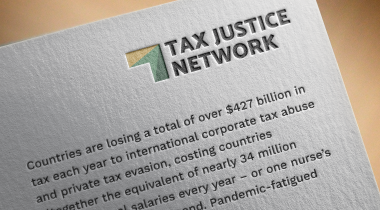
Andres Knobel ■ Addressing the secrecy risks of complex ownership chains: Another tool to improve beneficial ownership verification

While beneficial ownership registration is increasingly becoming mainstream, a major concern prevails: complex ownership chains. More than 80 jurisdictions had laws as of April 2020 requiring the disclosure to a government authority the identity of the beneficial owners↪NOTEA beneficial owner is the real person, made of flesh and blood, who ultimately owns, controls or receives profits from a company or legal vehicle, even when the company legally belongs, on paper, to another person or entity, like an accountant or a shell company. Learn more. of companies and other legal vehicles, meaning the natural persons who ultimately own or control them. In 2021, the Financial Action Task Force (FATF) in charge of making global anti-money laundering recommendations started a consultation on the reform of Recommendation 24 on beneficial ownership transparency of legal persons. If approved, the new Recommendation 24 will require countries to establish beneficial ownership registries. However, unless complexity is addressed, those seeking to circumvent the rule of law will still be able to twist and turn their way out of transparency.
Ever since Global Witness analysed the UK’s beneficial ownership register, the world became aware of the challenges of ensuring that beneficial ownership registers have accurate data, rather than unintentional or deliberate mistakes or false information. The Tax Justice Network has been promoting beneficial ownership verification by proposing a wide range of measures, setting up a multi-stakeholder group to promote verification pilots as well as curating best cases from all over the world.
Although verification usually involves carrying out cross-checks, red-flagging and other advanced techniques once a beneficial owner has been registered, a country’s legal framework could be reformed to intrinsically facilitate verification to prevent secrecy from the get-go. This could be achieved by better regulating complex ownership structures. Individuals and companies are legally able to set up any type of structure they want, from a simple one where the only shareholder of the company is at the same time its beneficial owner to a very complex structure involving many layers spread across several secrecy jurisdictions↪NOTEA secrecy jurisdiction is a tax haven that specialises in enabling individuals to hide their wealth and financial affairs from the rule of law, not just for the purpose of underpaying tax but for other financial crimes like money laundering and funding terrorist groups. Learn more.. While it’s absolutely free for an honest individual (or criminal) to set up a complex ownership chain (except for some legal or incorporation fees), the real price is paid by authorities. Investigators or any authority trying to verify beneficial ownership information will need to spend increasing resources in terms of staff, technology and time to be able to determine the identity of the beneficial owner who ultimately owns or controls the entity with a very complex structure. In many cases, if the complex structure features an entity from a secrecy jurisdiction, a trust or a company with bearer shares it may be impossible to find out who the beneficial owner is.
In order to understand complex structures and to develop ways to regulate them, in October of 2020 the Tax Justice Network together with other allies organised a closed roundtable with experts from international organisations, country authorities, civil society organisations, journalists, the private sector and academia.
The roundtable discussed several issues, including examples of complexity in relation to transparency and tax abuse, methods to study and determine complexity (eg the Tax Justice Network’s analysis of the number of layers of UK companies) , legitimate needs for transparency and potential measures to address complexity. Although there was no consensus among participants, some of the comments and discussions referred to:
- The need for evidence that complexity is indeed creating secrecy risks.
- Discussion of what a legitimate need for complexity may be. (The Tax Justice Network disagreed that tax planning or isolating risks would be “legitimate” arguments. In fact, we published a spin-off from this discussion proposing to rethink the system of limited liability, where the beneficial owner should be held accountable.)
- Caution about some measures, eg a requirement to obtain prior authorisation before incorporation, because these could backfire by becoming a source for corruption.
- Questioning whether complexity was an issue to be addressed at all.
Based on the feedback, discussion and presentations, we published this report with a focus on the secrecy risks (affecting beneficial ownership transparency) created by complex ownership structures. The report attempts to address some of the comments at the roundtable which questioned whether there is a need to regulate complexity or whether there’s adequate evidence that complexity is actually abused. In response to these comments, the report includes evidence of cases where complex ownership structures were abused to engage in money laundering, corruption, sanction circumvention, tax abuse, and so on.
The report also considers the justification for complexity, questioning some of the arguments mentioned by participants at the roundtable and evaluating other factors that would determine what measures are needed, especially the number of entities with complex structures and their economic significance.
The paper also offers a list of factors that could create complexity such as a high number of layers, presence of entities from secrecy jurisdictions in the ownership chain, and so on. The report includes an analysis of when those factors in isolation would be inoffensive (eg a high number of layers would create no harm if only local entities are allowed to integrate into the ownership chain because the local commercial register would have information available on each layer). However, the report considers that in most cases, none of the “neutralising measures” that would render the identified factors as inoffensive in isolation are implemented and so the factors continue to pose a risk even in isolation.
Acknowledging that this is a work in progress where discussions have just started, the report prescribes no specific policy to follow, but analyses the pros and cons of different measures (eg prohibition of complex structures versus “doing nothing”) and offers a list of actions that countries should consider, such as running an exploratory analysis of their own companies’ structures to determine outliers.
You can download the report by clicking on the link below. If you would like to be part of the discussion or have any feedback, please write to [email protected].
Full report here: Complex Ownership Structures: Addressing the Risks for Beneficial Ownership Transparency
Related articles
One-page policy briefs: ABC policy reforms and human rights in the UN tax convention

The Financial Secrecy Index, a cherished tool for policy research across the globe

When AI runs a company, who is the beneficial owner?
Insights from the United Kingdom’s People with Significant Control register
13 May 2025

Uncovering hidden power in the UK’s PSC Register

New article explores why the fight for beneficial ownership transparency isn’t over
Asset beneficial ownership – Enforcing wealth tax & other positive spillover effects
4 March 2025

Tax Justice transformational moments of 2024

The Tax Justice Network’s most read pieces of 2024


